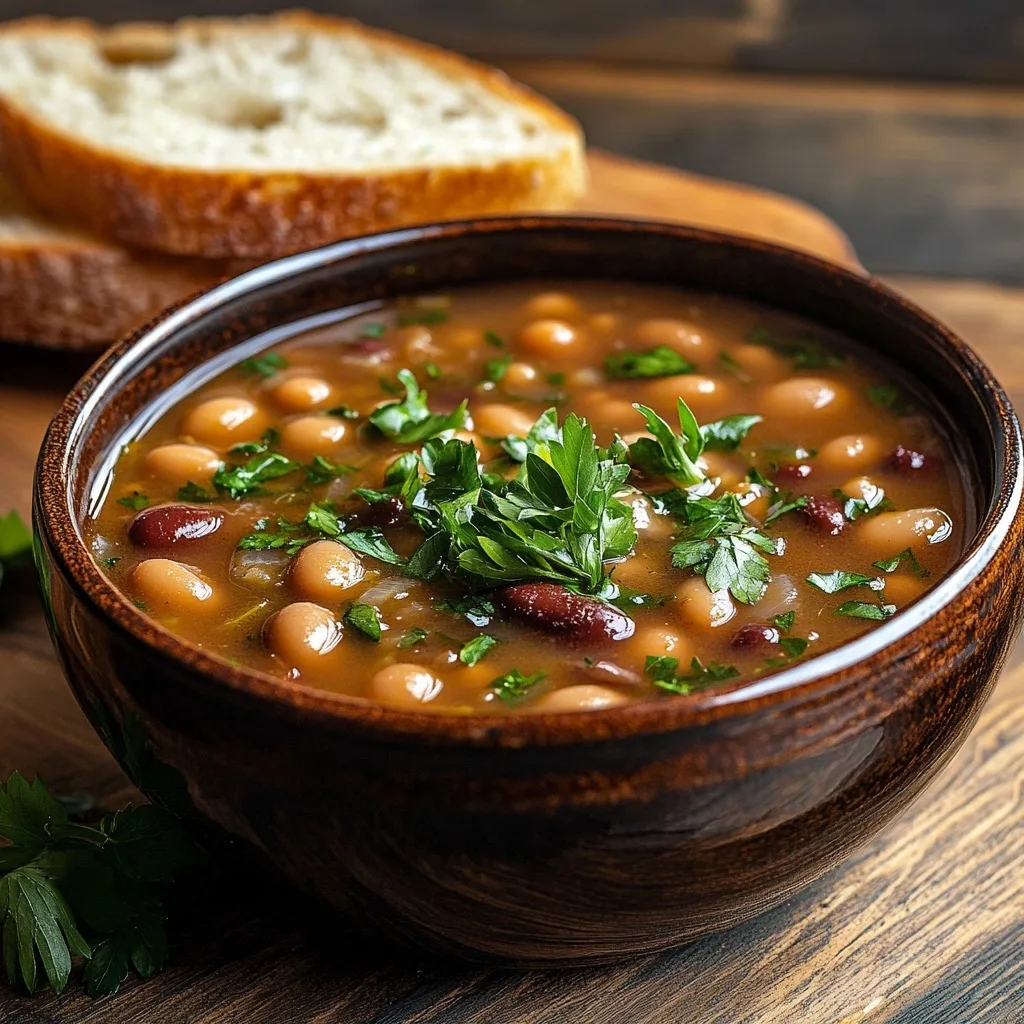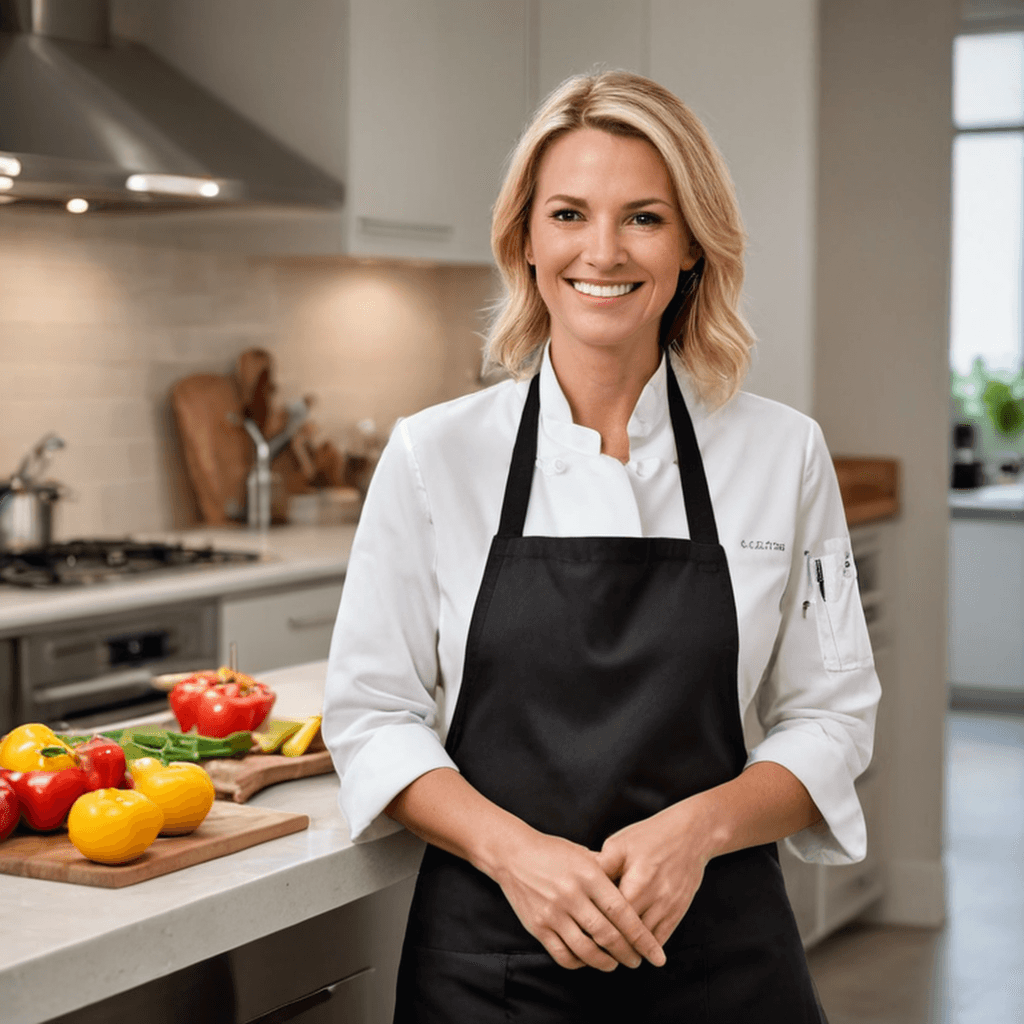A staple in kitchens worldwide, celebrated for its versatility, nutritional punch, and rich flavors. Whether you’re craving a creamy Tuscan white bean soup, a smoky flavor-infused delight, or a vibrant 15-bean medley, there’s a recipe for every palate. This guide dives into the art of crafting the perfect bean soup recipe, offering tips, techniques, and mouthwatering variations. Along the way, you’ll discover how to adapt these soups to suit dietary needs, experiment with flavors, and create hearty bowls of joy for your family.
Table of Contents
Introduction
What Makes Bean Soup a Classic Dish?
Bean soup has stood the test of time for good reason. It’s one of those rare dishes that combines comfort, nutrition, and affordability. With its ability to be tailored to any flavor profile—be it smoky, spicy, or herby—bean soup is like a blank canvas for culinary creativity. Plus, it’s as satisfying to eat as it is to make, filling homes with a cozy aroma that beckons everyone to the table.
Whether you’re simmering beans with a rich broth or infusing them with Mediterranean spices, this dish can transform humble pantry staples into something extraordinary. That’s why it’s a classic in cuisines ranging from Italian and Middle Eastern to Southern comfort food traditions.
For more delicious recipes, check out our guide to fresh apple cake, a perfect complement to any sweet breakfast spread!
The Nutritional Benefits of Bean Soups
Beans are powerhouses of nutrition, loaded with fiber, protein, and essential vitamins. Incorporating beans into your diet not only keeps you full longer but also supports heart health, stabilizes blood sugar levels, and boosts gut health.
For health-conscious eaters, bean soups offer a low-fat, high-protein meal option. Additionally, toss in some colorful vegetables like carrots, celery, or kale, and you’ve got a nutrient-dense bowl that’s not only wholesome but also incredibly delicious.
Overview of Popular Bean Soup Variations
The beauty of bean soup lies in its versatility. From creamy navy bean soups to smoky flavor-infused recipes, there’s a version to suit every taste. Here are some of the crowd-pleasers:
- Tuscan White Bean Soup: A light, herby Italian classic often made vegan or vegetarian.
- Navy Bean Soup: Rich and hearty, featuring smoky flavors that elevate the humble bean.
- 15-Bean Soup: A colorful mix of textures and flavors that’s as visually appealing as it is tasty.
- Mediterranean Bean Soup: Packed with olive oil, garlic, and fresh herbs, perfect for health-conscious foodies.
Ingredients
Choosing Your Beans: Navy, White, Mixed, or More
The star of any great bean soup recipe is, of course, the beans! Choosing the right type can significantly affect the texture and flavor of your soup.
- Navy Beans: Creamy and mild, they’re perfect for thick, hearty soups like navy bean soup.
- White Beans (Cannellini or Great Northern): Popular in Mediterranean and Tuscan recipes, these beans absorb flavors beautifully.
- Mixed Bean Blends: From 10-bean to 15-bean mixes, these options bring a variety of textures and flavors to the table.
- Black Beans or Kidney Beans: Ideal for spicier soups with a Latin or Cajun twist.
For convenience, canned beans work wonders if you’re short on time, but dried beans offer richer flavor and texture when properly prepared.
For more hearty comfort food ideas, explore the Comfort Food Guide for inspiration.
Key Vegetables and Aromatics
Vegetables and aromatics are what take a bean soup recipe from good to unforgettable. Staples include:
- Onions, Garlic, and Celery: These create a savory base and infuse depth into the broth.
- Carrots and Tomatoes: Their sweetness balances the earthy taste of beans.
- Leafy Greens: Kale, spinach, or Swiss chard add color, nutrients, and a fresh finish.
Don’t forget herbs like bay leaves, rosemary, or thyme. They elevate the aroma and tie all the ingredients together.
Flavor Enhancers: Broths, Spices, and Herbs
A good broth is the backbone of any soup. Vegetable or chicken broth works best for classic recipes, while a rich stock adds smoky richness. For seasoning, rely on:
- Smoked Paprika: For a subtle, smoky kick.
- Cumin and Coriander: These spices add warmth and depth.
- Fresh Herbs: Parsley, dill, or cilantro offer bright, fresh flavors.
For a creamy texture without dairy, blend part of the soup and stir it back into the pot.
Methods for Cooking Bean Soup
Stovetop Cooking: The Traditional Approach
Cooking bean soup on the stovetop is a time-tested method that allows flavors to meld beautifully. Here’s how:
- Start by sautéing your aromatics like onions and garlic in a large pot.
- Add your soaked beans, broth, and vegetables.
- Simmer over low heat, stirring occasionally, for 1–2 hours.
This method is perfect for achieving a rich, deep flavor in your bean soup recipe. Be patient—good things take time!
Slow Cooker Bean Soups for Busy Days
If you’re looking for a hands-off approach, a slow cooker is your best option. Simply combine all your ingredients in the slow cooker, then set it to low for 6–8 hours or high for 4–5 hours. The low, steady heat will ensure that the beans become tender and the broth develops rich flavor.
Pro tip: Always sauté your onions and garlic before adding them to the slow cooker to maximize flavor.
check out Sourdough Breakfast Recipes.
Pressure Cooker and Instant Pot Bean Soups
Short on time? A pressure cooker or Instant Pot can deliver a hearty bean soup recipe in under an hour. These appliances cut down cooking time while locking in flavor.
- Soak beans ahead of time to ensure even cooking.
- Use the sauté function for aromatics before pressure cooking.
- Release pressure naturally for the best texture.
Quick Hacks for Perfect Bean Soups Every Time
For those in a pinch, here are some quick tips:
- Use canned beans to skip soaking and long cooking times.
- Add a splash of lemon juice or vinegar at the end for brightness.
- Keep a bag of frozen mirepoix (onion, celery, carrot mix) on hand for a quick start.
With these techniques, you can enjoy a comforting bowl of bean soup no matter how busy your schedule gets.
Detailed Recipes for Popular Bean Soups
No relevant internal links were found for the keyword “bean soup recipe” on the provided website. However, here’s a suggestion:
For more delicious recipes, check out our recipe collection for culinary inspiration.
Classic Bean Soup Recipe
This bean soup recipe is a beloved classic, perfect for chilly days. With beans, it’s the ultimate comfort food.
Ingredients
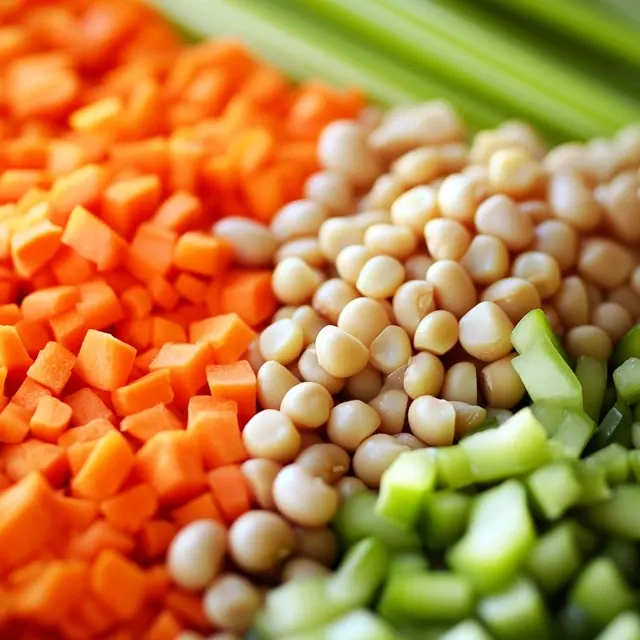
- 2 cups dried navy beans (soaked overnight)
- 1 large onion, diced
- 2 garlic cloves, minced
- 1 cup diced carrots
- 2 cups diced cooked chicken or beef
- 6 cups chicken broth
- 1 bay leaf, salt, and pepper to taste
Instructions
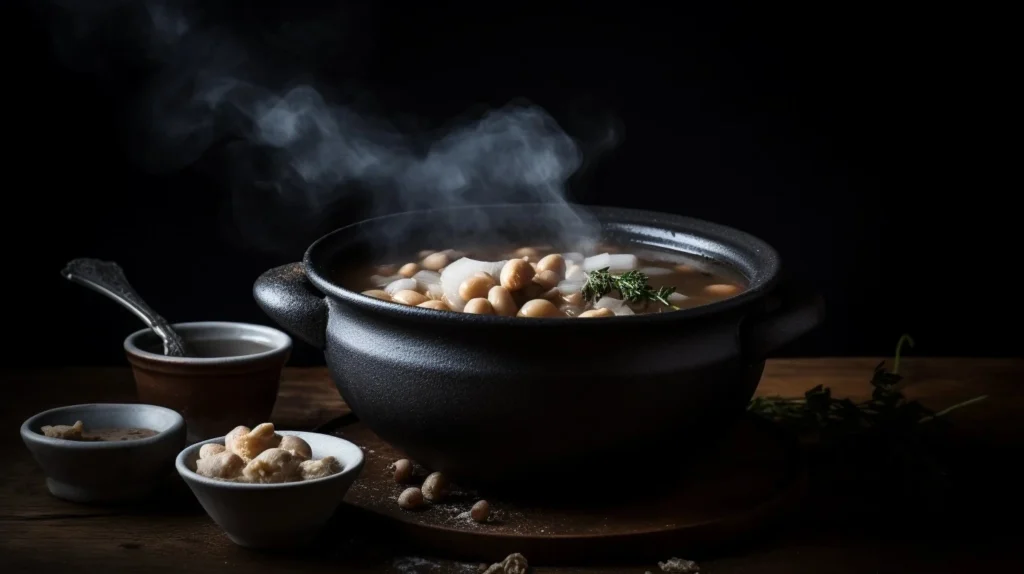
- In a large pot, sauté onions and garlic until fragrant.
- Add carrots, cooked chicken or beef, soaked beans, and broth.
- Season with a bay leaf, salt, and pepper.
- Simmer on low heat for 2 hours or until beans are tender.
This recipe pairs wonderfully with crusty bread or cornbread for a hearty meal.
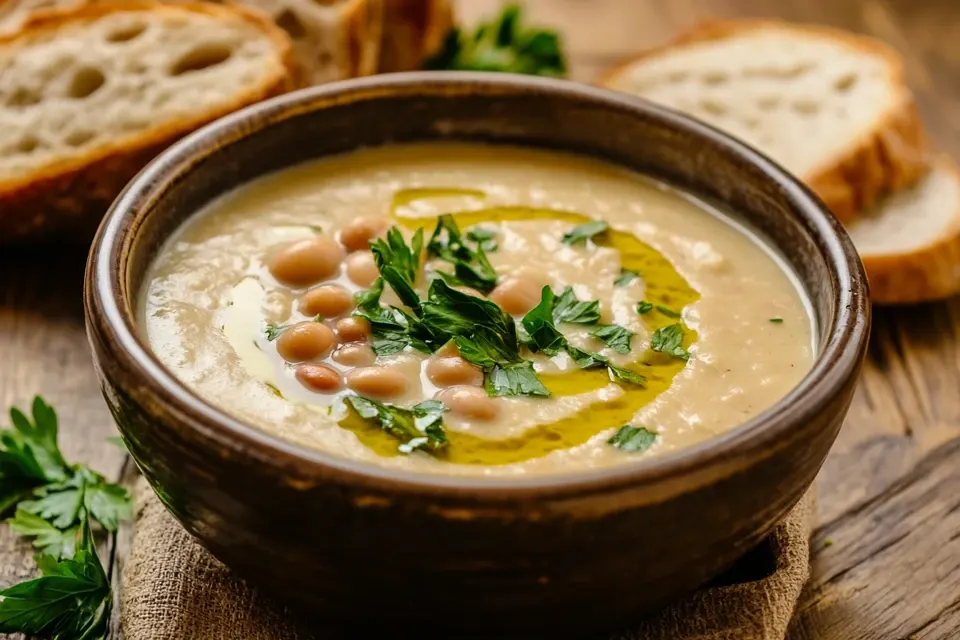
Vegan Tuscan White Bean Soup Recipe
Light and herbaceous, this vegan-friendly recipe showcases the Mediterranean’s best flavors.
Ingredients
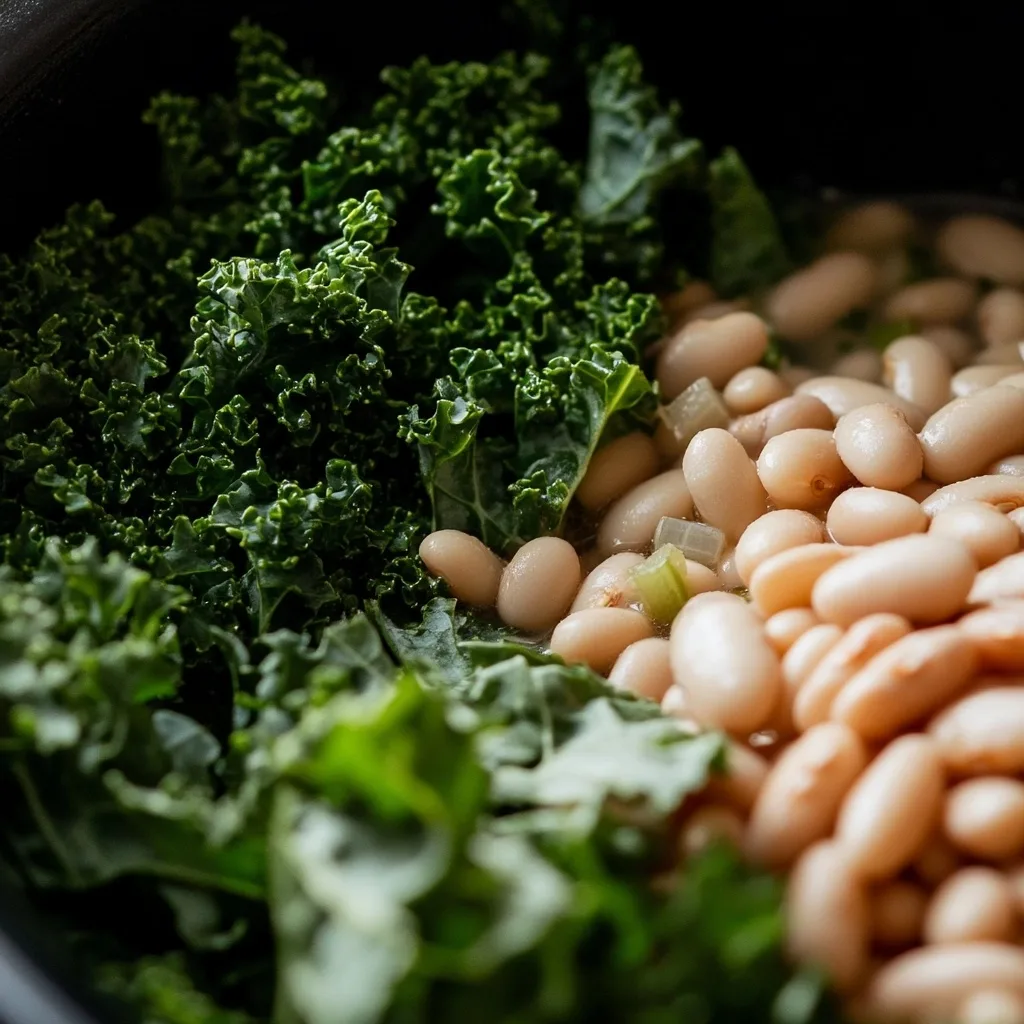
- 2 cups cannellini beans (cooked or canned)
- 2 cups vegetable broth
- 1 cup diced tomatoes
- 2 cups kale, chopped
- 1 small onion and 2 garlic cloves, minced
Instructions
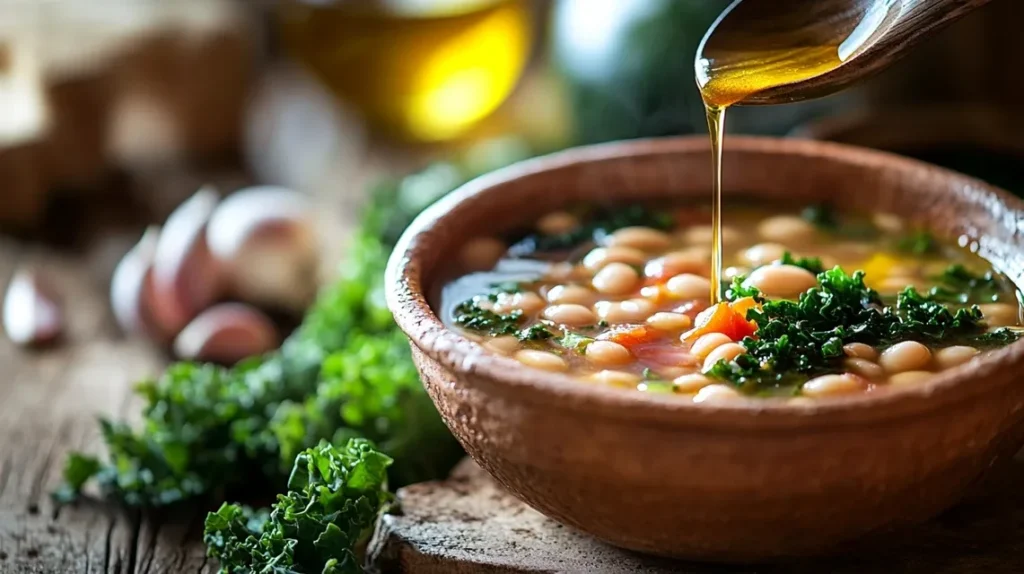
- Heat olive oil in a pot and sauté onions and garlic.
- Add tomatoes, beans, and broth; let it simmer for 20 minutes.
- Stir in kale and cook for another 5 minutes.
This healthy bean soup recipe is both flavorful and easy to customize with your favorite herbs.
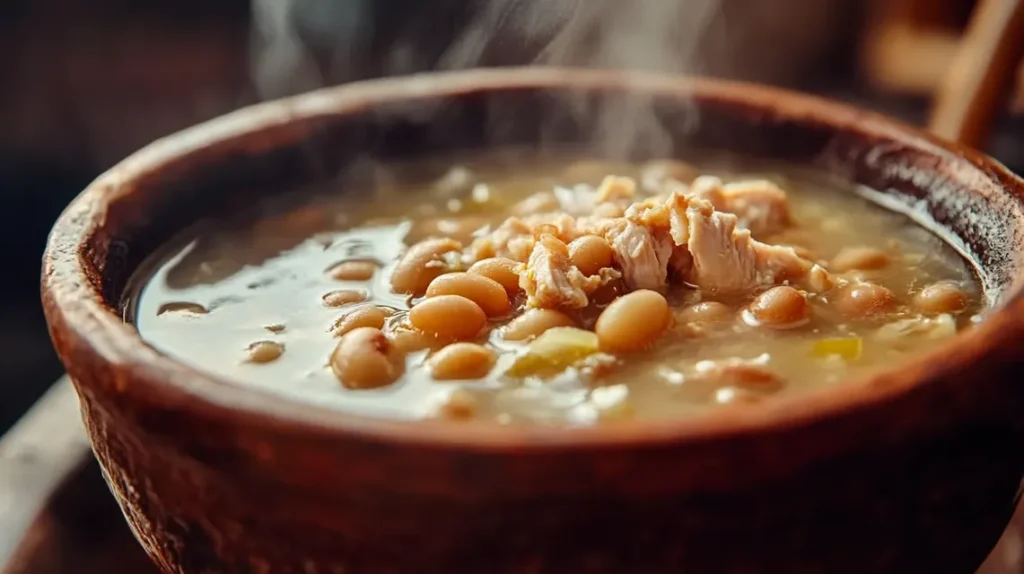
Medley of Flavors
The beauty of this soup lies in its variety. It’s an explosion of textures and colors in every bite.
Ingredients
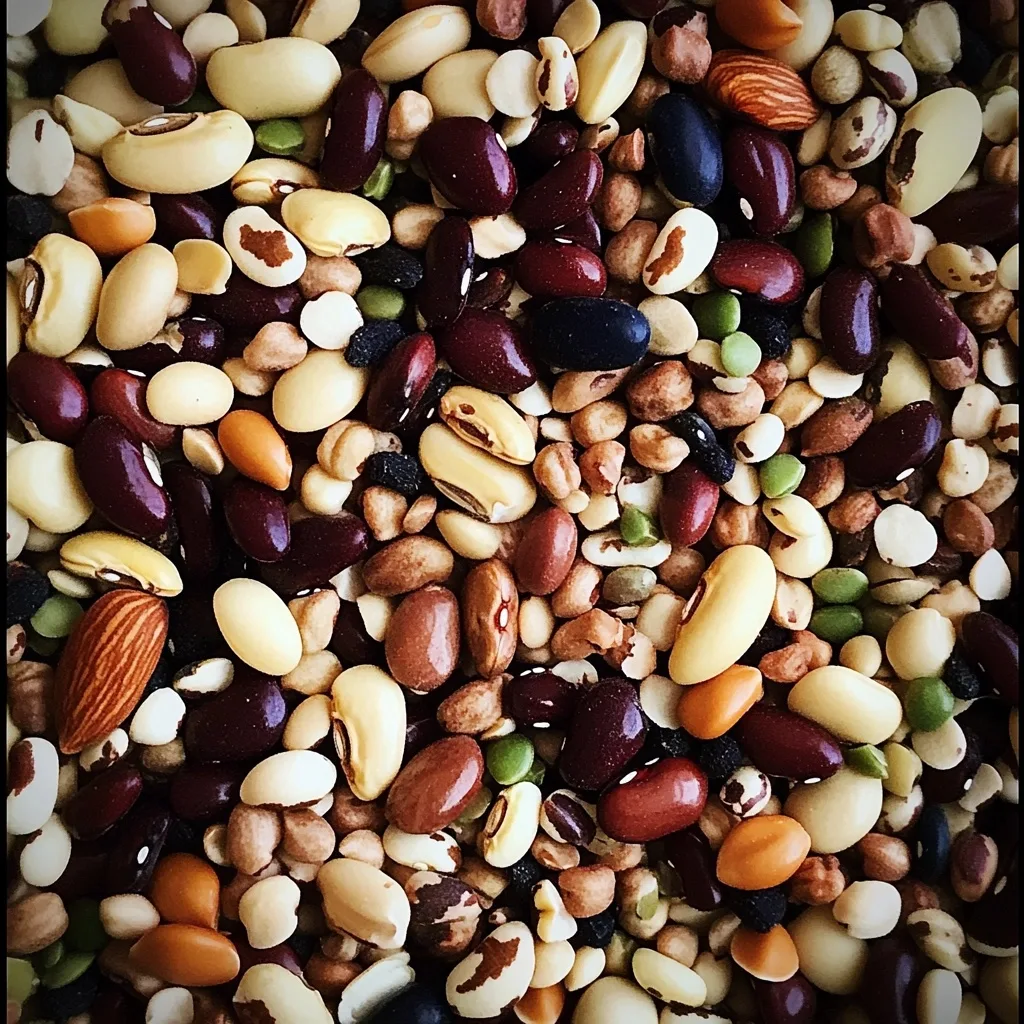
- 1 package of dried 15-bean mix
- 1 small onion, diced
- 2 garlic cloves, minced
- 1 can diced tomatoes
- 6 cups vegetable broth
Soak the beans overnight and rinse thoroughly.
- Sauté onions and garlic in a large pot.
- Add beans, tomatoes, and broth; simmer for 90 minutes.
Instructions
Serve this soup with a splash of vinegar or hot sauce for added zing.
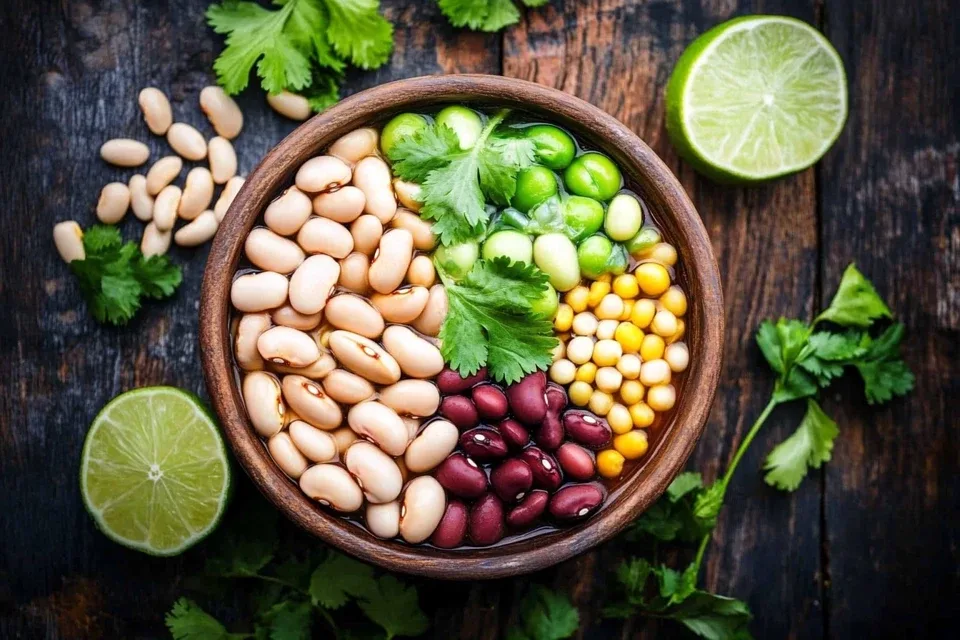
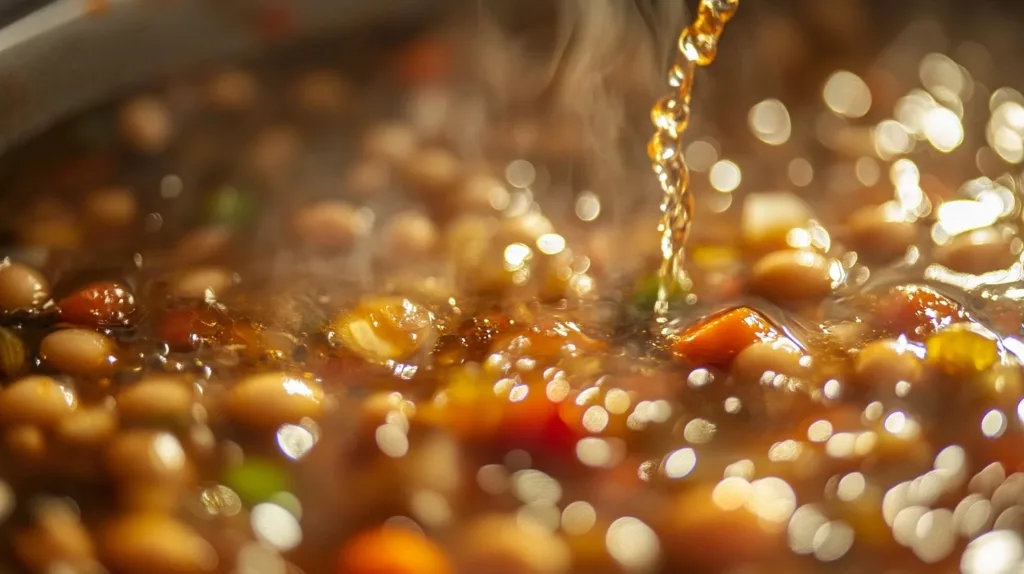
Tips for Customizing Your Bean Soup
Adapting Recipes for Dietary Needs
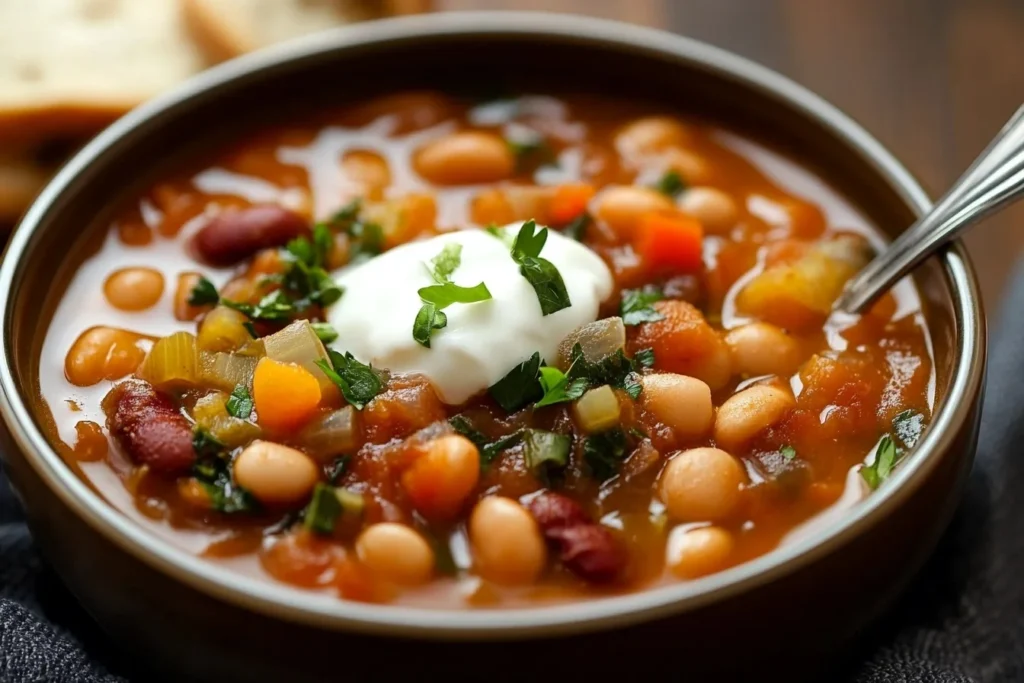
One of the best things about any bean soup recipe is its adaptability. Want it vegan? Skip the chicken or beef and use vegetable broth. Gluten-free? Beans are naturally gluten-free, so you’re already in luck! You can also blend half of the soup for a creamy texture without adding dairy.
Seasonal Vegetables to Incorporate
Get creative by using whatever is in season. Summer squashes, sweet potatoes, or even bell peppers can bring new life to a classic bean soup recipe. Fresh herbs like basil or dill also work wonders to brighten the dish.
Frequently Asked Questions Bean Soup
What Are the Best Beans for Soup?
The type of beans you choose can make or break your bean soup recipe. Navy beans are creamy and mild, ideal for a classic hearty bean soup. Cannellini beans work beautifully in Tuscan recipes thanks to their ability to soak up flavors. If you’re feeling adventurous, try a 15-bean mix for a medley of textures and tastes. Canned beans are convenient, but dried beans offer richer flavor and better control over salt content.
How Long Should I Soak Beans Before Cooking?
If you’re using dried beans, soaking them is key to ensuring even cooking. Ideally, soak them overnight in cold water for 8–12 hours. If you’re short on time, a quick soak method works too—boil the beans for 2 minutes, then let them sit in hot water for an hour before draining and rinsing. However, some recipes, like those using split peas or lentils, don’t require soaking.
Can I Use Canned Beans for Soup?
Absolutely! Canned beans are a lifesaver for busy cooks. They’re pre-cooked, meaning you can skip soaking and long cooking times. Just rinse them thoroughly to remove excess sodium. Whether you’re making a quick 15-bean soup or a Tuscan white bean soup, canned beans are a great substitute.
How Do I Store Leftover Bean Soup?
Leftovers are a blessing when it comes to bean soup. Once your bean soup has cooled, store it in an airtight container in the fridge for up to 5 days. For longer storage, freeze the soup in portion-sized containers, where it will keep for up to 3 months. When you’re ready to enjoy it again, simply reheat on the stove or in the microwave, and add a splash of water or broth to refresh the flavors.
What Are Common Mistakes to Avoid?
1.Skipping the Soak: For dried beans, soaking reduces cooking time and improves digestibility.
2.Undercooking Beans: Make sure they’re tender before serving.
3.Over-salting Early: Add salt at the end of cooking to avoid tough beans.
4.Not Adjusting Seasoning: Taste and tweak your seasonings as the soup simmers to achieve the best flavor.
Conclusion
Bean soups are more than just a meal; they’re a celebration of comfort, flavor, and versatility. Whether you’re whipping up a quick vegan Tuscan soup or indulging in a hearty chicken or beef and bean classic, each bean soup recipe has its own charm.
With simple ingredients, easy cooking methods, and endless room for creativity, bean soups should be a staple in every kitchen. So, grab your favorite beans, stock up on fresh vegetables, and start experimenting. The possibilities are as endless as they are delicious.
For more recipe ideas and cooking tips, explore our recipe collection.
Print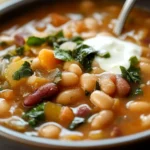
The Ultimate Guide to Bean Soup Recipes
- Total Time: 2 hours 10 minutes
- Yield: 6 bowls 1x
Description
A staple in kitchens worldwide, this classic bean soup is rich, hearty, and versatile. Featuring navy beans, vegetables, and aromatic herbs, it’s the ultimate comfort food, perfect for chilly days or whenever you need a nutritious, filling meal. This recipe offers a savory balance of flavors and a satisfying texture, making it an easy go-to for a cozy family dinner.
Ingredients
- 2 cups dried navy beans (soaked overnight)
- 1 large onion, diced
- 2 garlic cloves, minced
- 1 cup diced carrots
- 2 cups diced cooked chicken or beef (optional for a meaty version)
- 6 cups chicken broth (or vegetable broth for a vegan option)
- 1 bay leaf
- Salt and pepper to taste
Instructions
- In a large pot, sauté the diced onions and minced garlic over medium heat until fragrant and soft.
- Add the diced carrots and sauté for an additional 2–3 minutes.
- Stir in the soaked beans, broth, and bay leaf.
- Bring to a boil, then reduce heat to low. Let the soup simmer uncovered for about 2 hours, or until the beans are tender.
- Add salt and pepper to taste. If you want to add chicken or beef, stir it in at this stage.
- Remove the bay leaf before serving.
- Serve hot with crusty bread or cornbread for a hearty meal.
Notes
- Vegan Option: Omit the meat and use vegetable broth instead of chicken broth.
- Slow Cooker Option: Combine all ingredients in the slow cooker, set to low for 6-8 hours, or high for 4-5 hours.
- Storage: Leftover soup can be stored in the fridge for up to 5 days or frozen for up to 3 months. Reheat on the stovetop, adding extra broth or water if needed.
- Customize: Add kale, spinach, or other leafy greens for a boost of nutrients, or try a dash of smoked paprika for extra flavor.
- Prep Time: 10 minutes
- Cook Time: 2 hours
- Category: Lunch
- Cuisine: American
Nutrition
- Serving Size: 6 servings
- Calories: 350 kcal
- Fat: 10g
- Carbohydrates: 50g
- Protein: 20g

